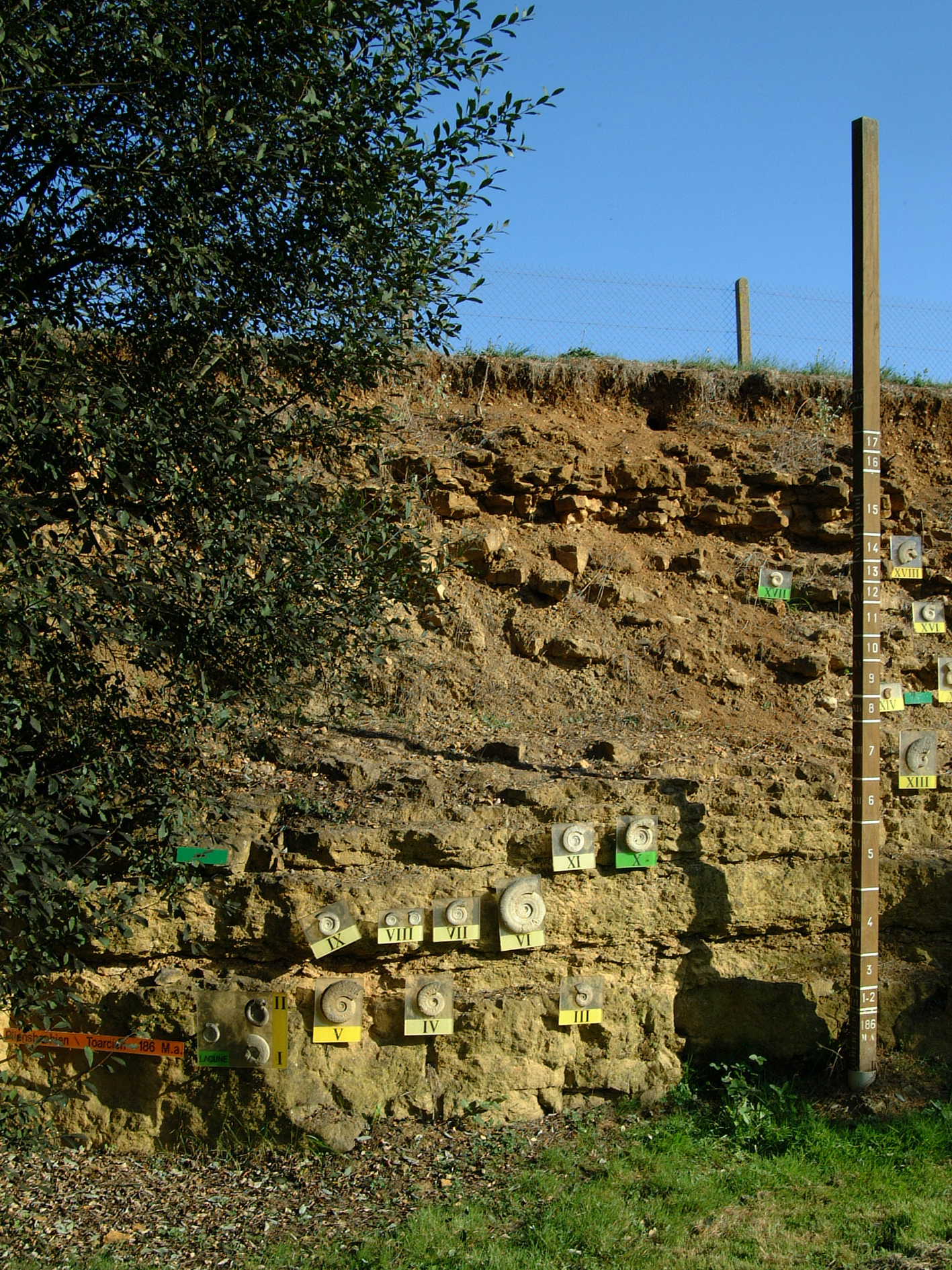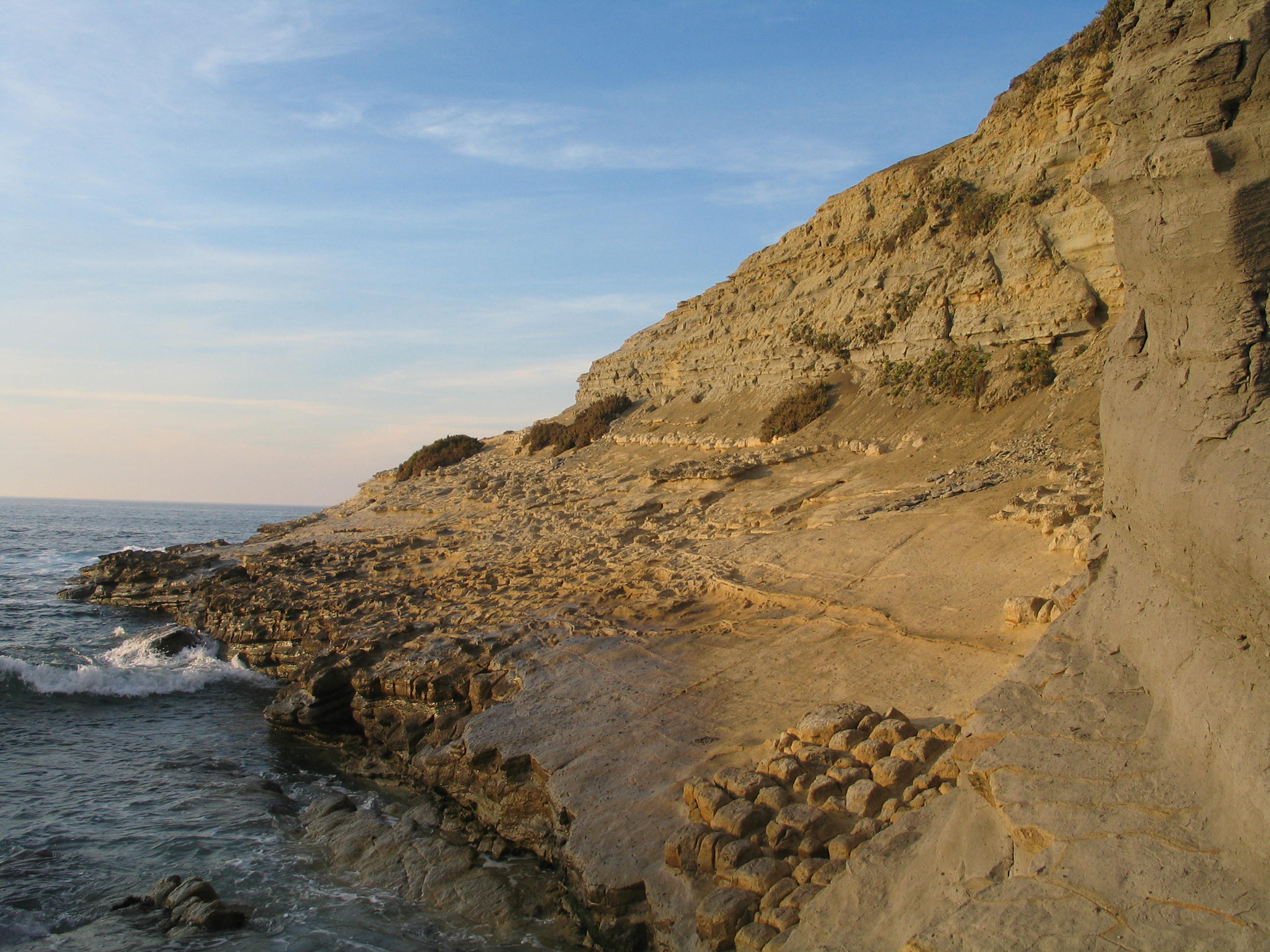Toarcian (184.2 +/-0.3 Ma)
Back to Time ScaleRepresentation and status
- Index
- toa
- Color CMYK
- 40 / 5 / 0 / 0
- Color RGB
- R: 153 G: 206 B: 227
- Rank
- chronostratigraphic Stage
- Validity
- Unit is in Use
- Status
- valid formal name
- Status discussion
Nomenclature
- Deutsch
- Toarcien (CH) (DE/AT: Toarcium / Toarc)
- Français
- Toarcien
- Italiano
- Toarciano
- English
- Toarcian (184.2 +/-0.3 Ma)
- Origin of the Name
-
Named after the town of Thouars (Deux-Sèvres, France), south of Saumur. The protected stratotype lies in an old quarry. Its GSSP is located at Peniche (Portugal).
- Historical Variants
-
Lias supérieur (d'Orbigny 1842), Toarcien (d'Orbigny 1849), Thouarsien (Mayer-Eymar 1864, Mouterde 1956), 12e Etage = Toarcien (Greppin 1866)
- Nomenclatorial Remarks
-
Latin: Toarcium
Hierarchy and sequence
- Subordinate units
- Units at roof
- Upper boundary
-
Top lies just below the first appearance of the ammonite genus Leioceras.
- Lower boundary
-
Base defined by the first appearance of Eodactylites mirabile (Tethyan Realm), or alternatively by the mass appearance of other dactylioceratids together with Paltarpites paltus.
Age
- Age at top
-
- Toarcian
- Age at base
-
- Toarcian
Geography
- Type area
- Deux-Sèvres (Paris Basin, France)
- Type profile
-
-
Carrière de Vrines (Deux-Sèvres), près de Thouars
Site particularities- typische Fazies
- geschützter Geotop
- <p>Proposed by d'Orbigny (1849) and further studied by Eudes-Deslongchamps and Welsch. Detailed biostratigraphy by Gabilly (1976), who pointed out the condensed nature (7 m altogether) of the section and the incompleteness of the record at the base.</p>
-
Carrière de Vrines (Deux-Sèvres), près de Thouars
- Reference profiles
-
-
Anse Saint-Nicolas, Jard-sur-Mer (Vendée, France)
Site particularities- Untergrenze
- Complementary profile proposed by Gabilly (1976) for the base of the Toarcian stage.
-
Anse Saint-Nicolas, Jard-sur-Mer (Vendée, France)
References
- Definition
-
(1846) :
Foraminifères fossiles du bassin tertiaire de Vienne (Autriche). Gide, Paris
Ce nom dérive de la ville de Thouars (Toarcium) (Deux-Sèvres), où l'on ne trouve que cet étage sur les roches aszoïques; où il a le plus beau développement en France et peut être regardé comme point type, point étalon. C'est la zone du Lima gigantea et de l'Ammonites bifrons.
-
Late Toarcian
-
Middle Toarcian
- Rank
- chronostratigraphic Substage
- Status
- valid formal name
- In short
- The Middle Toarcian is defined biostratigraphically by the ammonite genera Hildoceras and Haugia.
- Age
- middle Toarcian
-
Early Toarcian
- Rank
- chronostratigraphic Substage
- Status
- valid formal name
- In short
-
The Early Toarcian is characterized almost worldwide by black shales (among which the well-known «Posidonienschiefer» of Southern Germany, and the French «schistes-carton») with an ammonite fauna composed mainly of dactylioceratids, harpoceratids and early hildoceratids.
- Age
- early Toarcian
-
Toarcian Oceanic Anoxic Event
- Rank
- Oceanic Anoxic Event
- Status
- informal term
- In short
-
Major oceanic anoxic event of the Early Toarcian (around 183 Ma ago), documented by black shale deposits found on all major continents (no oceanic drilling cores have recovered black shales of this age as there is little or no Toarcian ocean crust remaining in the world ocean). This event correlates with a marine extinction event.


